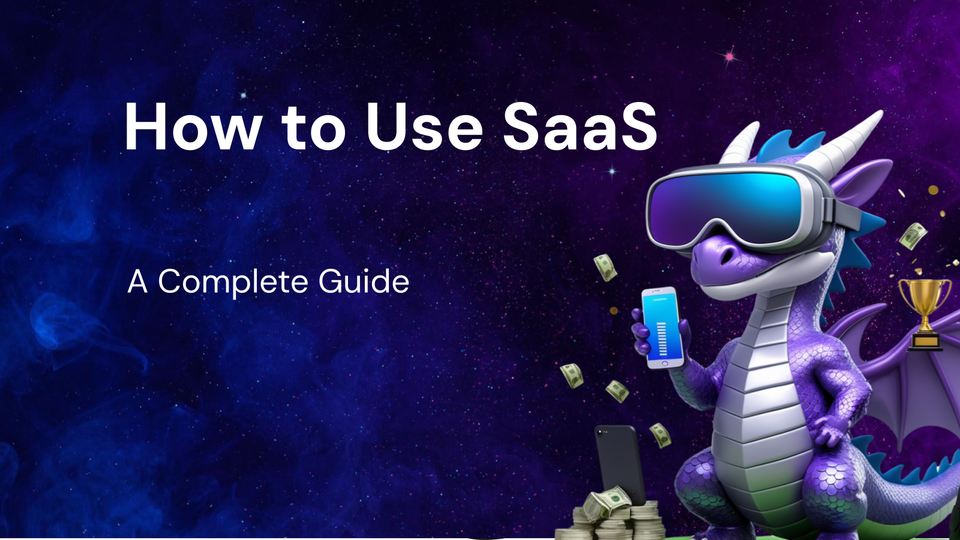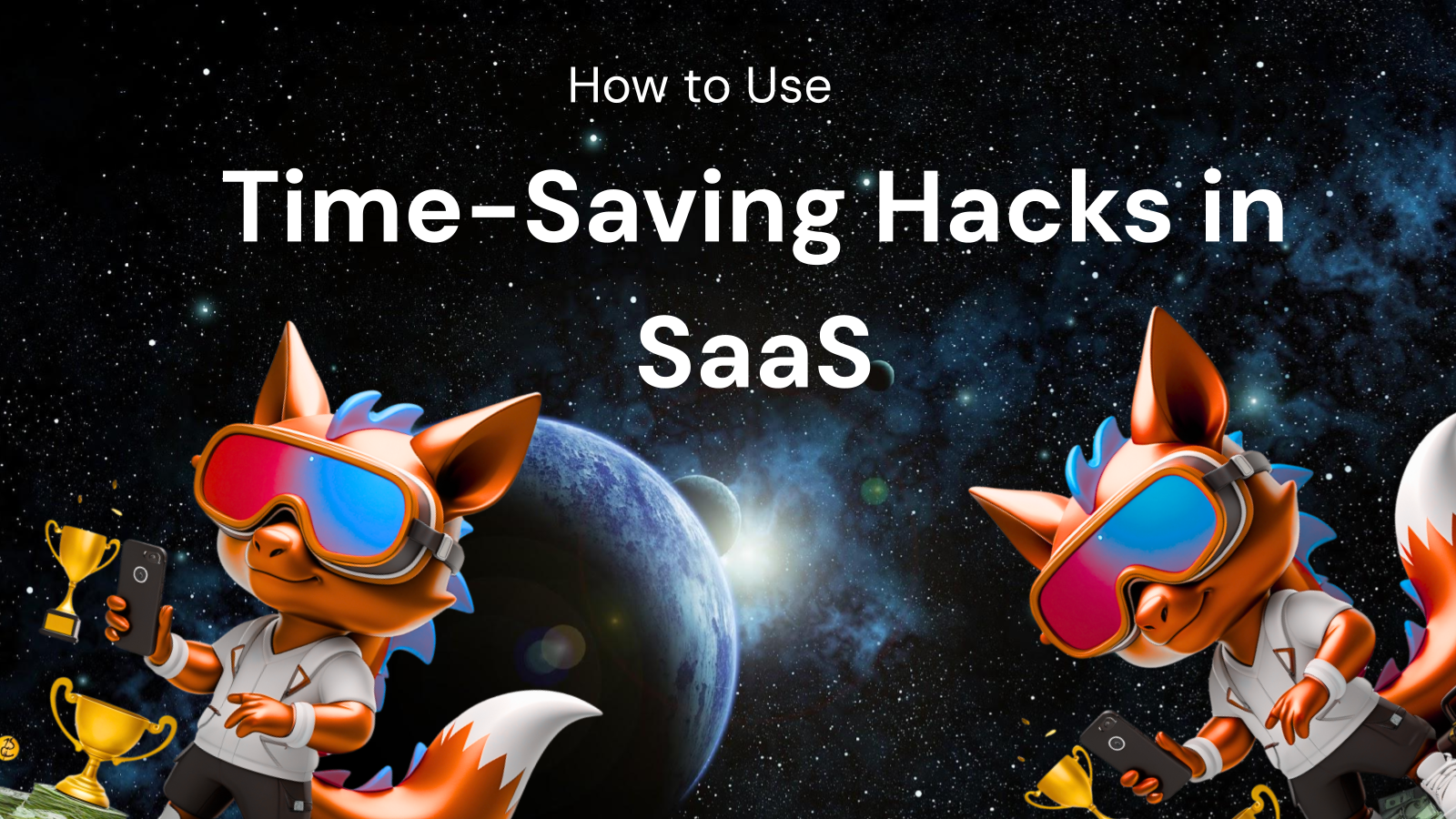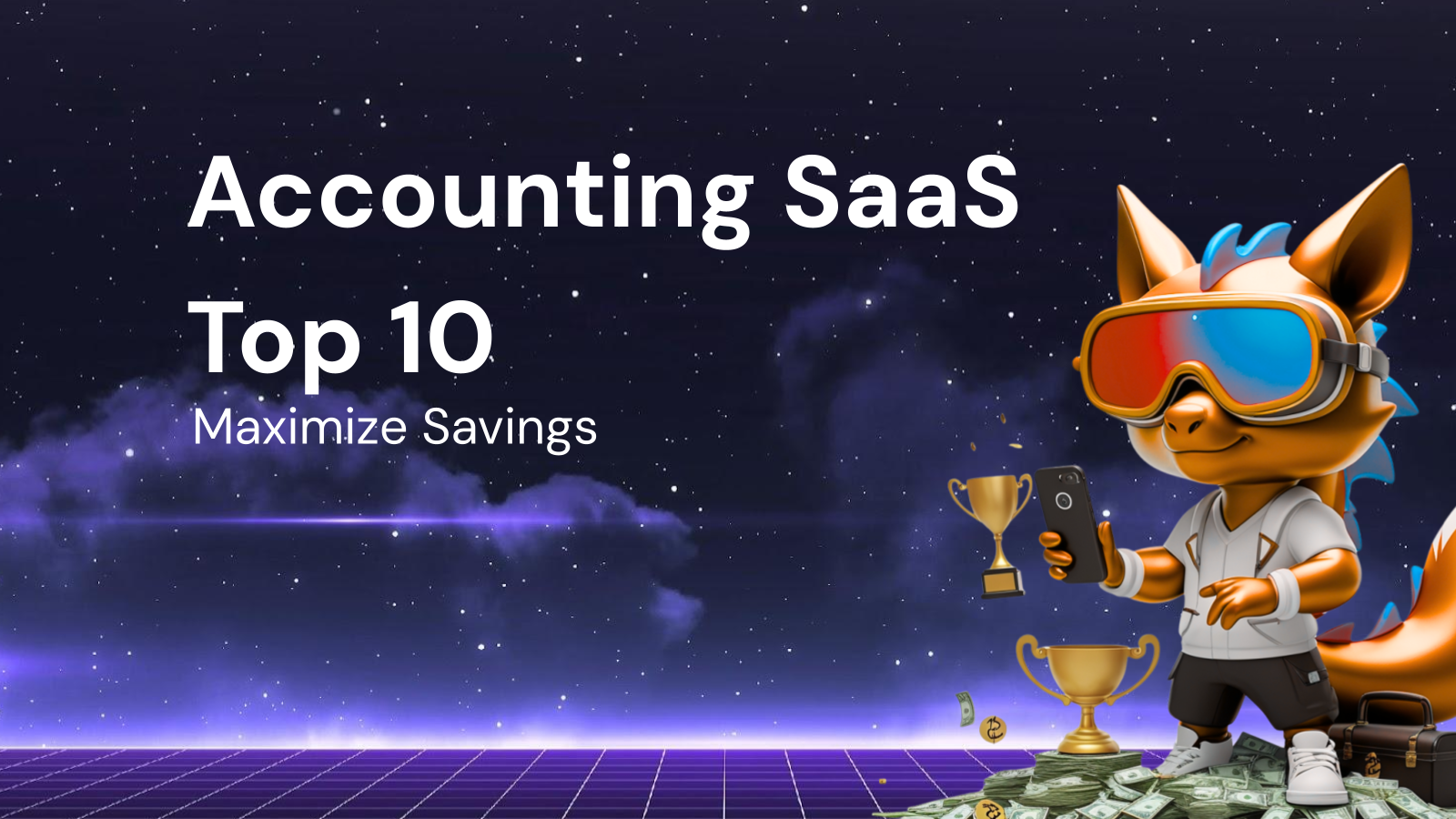How to Use SaaS: A Complete Guide

How to Use SaaS: A Complete Guide
Software as a Service (SaaS) has revolutionized the way businesses and individuals access and utilize software. Gone are the days of expensive licenses, complicated installations, and ongoing maintenance. SaaS offers a flexible, cost-effective, and scalable alternative, allowing users to access powerful applications through the internet, on demand. This comprehensive guide will delve into the world of SaaS, exploring its benefits, different types, how to choose the right solution, implementation strategies, best practices, and future trends.
What is SaaS? A Cloud-Based Revolution
At its core, SaaS is a software delivery model where a third-party provider hosts and manages software applications, making them available to customers over the internet. Think of it as renting software instead of buying it. Users typically pay a subscription fee, which can be monthly or annually, to access the software.
Here's a breakdown of the key components of SaaS:
- Software Application: The specific program or tool that users access, such as CRM, accounting software, or project management software.
- Third-Party Provider: The company responsible for developing, hosting, maintaining, and updating the software.
- Cloud Infrastructure: The network of servers, storage, and other resources that the provider uses to run the software.
- Internet Connection: The essential link that allows users to access the software from anywhere with an internet connection.
- Subscription Model: The payment structure, typically a recurring fee based on usage, number of users, or features accessed.
The Benefits of SaaS: Why Choose the Cloud?
SaaS offers a multitude of advantages over traditional on-premise software solutions, making it an increasingly popular choice for businesses of all sizes:
- Cost-Effectiveness: SaaS eliminates the need for upfront licensing fees, reducing initial investment. The subscription model also allows for predictable monthly or annual expenses, making budgeting easier. Maintenance, upgrades, and infrastructure costs are handled by the provider, further reducing the total cost of ownership (TCO).
- Accessibility and Convenience: SaaS applications can be accessed from anywhere with an internet connection and a web browser, enabling remote work and collaboration. This flexibility is particularly valuable for geographically dispersed teams.
- Scalability and Flexibility: SaaS solutions can be easily scaled up or down to meet changing business needs. As your business grows, you can add more users or features without significant infrastructure investments. Conversely, you can reduce your subscription if your needs decrease.
- Automatic Updates and Maintenance: The SaaS provider handles all software updates, bug fixes, and maintenance, freeing up your IT staff to focus on more strategic initiatives. This ensures you're always using the latest version of the software with the most up-to-date features and security patches.
- Faster Implementation: SaaS applications are typically quick to deploy and configure, allowing you to start using them almost immediately. There's no need to install software on individual computers or manage complex server configurations.
- Integration Capabilities: Many SaaS solutions offer integrations with other applications, allowing you to connect different systems and streamline workflows. This enhances data visibility and improves overall efficiency.
- Focus on Core Business: By outsourcing software management to a third-party provider, you can focus on your core business activities and strategic goals. You no longer need to dedicate resources to managing and maintaining software infrastructure.
- Enhanced Security: Reputable SaaS providers invest heavily in security measures, including data encryption, access controls, and regular security audits, to protect your data from unauthorized access and cyber threats. They often have more robust security infrastructure than smaller businesses can afford to implement on their own.
- Improved Collaboration: SaaS solutions often provide built-in collaboration tools, such as shared documents, project management features, and communication platforms, facilitating teamwork and improving productivity.
Types of SaaS: A Diverse Landscape
SaaS applications span a wide range of industries and functionalities. Here are some common categories:
- Customer Relationship Management (CRM): Manages customer interactions, sales processes, and marketing campaigns. Examples include Salesforce, HubSpot CRM, and Zoho CRM.
- Enterprise Resource Planning (ERP): Integrates various business functions, such as finance, human resources, and supply chain management. Examples include NetSuite, SAP S/4HANA Cloud, and Microsoft Dynamics 365.
- Human Resource Management (HRM): Automates HR processes, such as payroll, benefits administration, and talent management. Examples include Workday, BambooHR, and ADP Workforce Now.
- Project Management: Helps plan, track, and manage projects, tasks, and resources. Examples include Asana, Trello, and Monday.com.
- Collaboration and Communication: Facilitates communication and collaboration among team members. Examples include Slack, Microsoft Teams, and Google Workspace.
- Accounting and Finance: Manages financial transactions, accounting tasks, and reporting. Examples include QuickBooks Online, Xero, and FreshBooks.
- E-commerce: Provides platforms for selling products and services online. Examples include Shopify, BigCommerce, and Magento Commerce Cloud.
- Marketing Automation: Automates marketing tasks, such as email marketing, social media posting, and lead nurturing. Examples include Marketo, Pardot, and Mailchimp.
- Content Management Systems (CMS): Allows users to create, manage, and publish digital content. Examples include WordPress.com, Contentful, and Drupal.
- Security: Provides security solutions for protecting data and infrastructure. Examples include Okta, CrowdStrike, and Cloudflare.
Choosing the Right SaaS Solution: A Strategic Approach
Selecting the right SaaS solution for your business is a critical decision that requires careful consideration. Here's a step-by-step approach to guide you through the process:
- Define Your Needs and Goals: Begin by clearly defining your business needs and goals. What problems are you trying to solve? What specific functionalities do you require? What are your desired outcomes? Involve stakeholders from different departments to ensure you have a comprehensive understanding of your requirements.
- Research and Identify Potential Solutions: Conduct thorough research to identify SaaS solutions that align with your needs. Explore online reviews, industry reports, and vendor websites. Create a shortlist of potential vendors.
- Evaluate Features and Functionality: Carefully evaluate the features and functionality of each solution on your shortlist. Do they meet your specific requirements? Are they user-friendly and intuitive? Consider the scalability of the solution and its ability to integrate with other systems.
- Assess Security and Compliance: Security is paramount when choosing a SaaS solution. Ensure the vendor has robust security measures in place to protect your data. Check if they comply with relevant industry regulations and data privacy laws.
- Consider Integration Capabilities: Assess how well the SaaS solution integrates with your existing systems and workflows. Seamless integration can streamline processes and improve data visibility. Look for solutions that offer APIs or pre-built integrations with other applications.
- Evaluate Pricing and Licensing: Compare the pricing models and licensing options offered by different vendors. Understand the total cost of ownership, including subscription fees, implementation costs, and ongoing support. Choose a pricing plan that aligns with your budget and usage requirements.
- Request a Demo or Trial: Most SaaS vendors offer free demos or trial periods. Take advantage of these opportunities to test the software and see if it meets your expectations. Involve key users in the trial process to get their feedback.
- Check References and Reviews: Read online reviews and check references from other customers to get an objective assessment of the vendor's reputation and the quality of their service. Pay attention to both positive and negative feedback.
- Negotiate Terms and Conditions: Before signing a contract, carefully review the terms and conditions. Negotiate any clauses that are unfavorable or unclear. Ensure you understand the service level agreement (SLA) and the vendor's responsibilities.
- Consider Future Needs: Think about the long-term scalability and adaptability of the SaaS solution. Will it be able to meet your evolving business needs as your company grows?
Implementing SaaS: A Smooth Transition
Implementing a new SaaS solution requires careful planning and execution. Here are some key steps to ensure a smooth transition:
- Develop a Detailed Implementation Plan: Create a comprehensive plan that outlines the implementation process, timelines, responsibilities, and resources required.
- Data Migration: Plan the data migration process carefully to ensure a seamless transfer of data from your existing systems to the new SaaS solution. Cleanse and validate the data before migrating it to avoid errors.
- User Training: Provide comprehensive training to all users on how to use the new SaaS solution effectively. Offer training materials, tutorials, and ongoing support.
- Integration and Customization: Configure the SaaS solution to integrate with your existing systems and customize it to meet your specific business requirements.
- Testing and Validation: Thoroughly test the SaaS solution to ensure it is working correctly and that all functionalities are functioning as expected.
- Go-Live and Monitoring: Plan the go-live process carefully to minimize disruption to your business operations. Monitor the system performance and provide ongoing support to users.
- Gather Feedback and Iterate: Collect feedback from users and stakeholders to identify areas for improvement. Continuously iterate on the implementation process to optimize the solution and enhance user experience.
Best Practices for Using SaaS: Maximizing Value
To maximize the value of your SaaS investments, follow these best practices:
- Regularly Review Usage and Performance: Track the usage and performance of your SaaS solutions to ensure they are meeting your business needs. Identify areas where you can optimize usage or reduce costs.
- Manage User Access and Permissions: Implement strong access controls to protect sensitive data. Regularly review user permissions and revoke access for employees who no longer need it.
- Stay Up-to-Date with Security Updates: Ensure that your SaaS solutions are always up-to-date with the latest security patches. Follow the vendor's recommendations for securing your data.
- Train Employees on Security Awareness: Educate your employees about security best practices and the importance of protecting sensitive data.
- Backup Your Data Regularly: While SaaS providers typically offer data backup services, it's always a good idea to maintain your own backups of critical data to ensure business continuity.
- Monitor Service Level Agreements (SLAs): Track the vendor's performance against the service level agreement to ensure they are meeting their obligations.
- Optimize Your SaaS Stack: Regularly review your SaaS stack to identify redundant or underutilized applications. Consolidate or eliminate unnecessary tools to reduce costs and complexity.
- Stay Informed About New Features and Updates: Keep up-to-date with the latest features and updates from your SaaS providers to take advantage of new capabilities and improvements.
The Future of SaaS: Trends and Predictions
The SaaS landscape is constantly evolving, with new trends and technologies emerging all the time. Here are some key trends to watch out for:
- Artificial Intelligence (AI) and Machine Learning (ML): AI and ML are being increasingly integrated into SaaS applications to automate tasks, improve decision-making, and personalize user experiences.
- Low-Code/No-Code Platforms: Low-code/no-code platforms are making it easier for businesses to build and customize SaaS applications without extensive coding skills.
- Microservices Architecture: SaaS applications are increasingly being built using microservices architecture, which allows for greater flexibility, scalability, and resilience.
- Edge Computing: Edge computing is bringing data processing closer to the source, enabling faster response times and improved performance for SaaS applications.
- Vertical SaaS: Vertical SaaS solutions are tailored to the specific needs of particular industries, offering specialized features and functionalities.
- Increased Focus on Security and Privacy: Security and privacy will continue to be top priorities for SaaS providers as cyber threats become more sophisticated and data privacy regulations become stricter.
- Hybrid SaaS Solutions: Organizations are increasingly adopting hybrid SaaS solutions, which combine on-premise infrastructure with cloud-based applications.
- Composable SaaS: Composable SaaS allows businesses to build custom applications by combining pre-built SaaS components from different vendors.
Conclusion: Embracing the Power of SaaS
SaaS has transformed the way businesses access and utilize software, offering numerous benefits, including cost-effectiveness, accessibility, scalability, and automatic updates. By understanding the different types of SaaS solutions, following a strategic approach to selection, implementing best practices, and staying informed about future trends, you can leverage the power of SaaS to drive innovation, improve efficiency, and achieve your business goals. Embracing SaaS is no longer a question of "if" but "how," and this guide provides a comprehensive roadmap for navigating the world of cloud-based software and unlocking its full potential. As the SaaS landscape continues to evolve, staying adaptable and informed will be crucial for businesses looking to gain a competitive edge in today's dynamic digital environment.




Comments ()